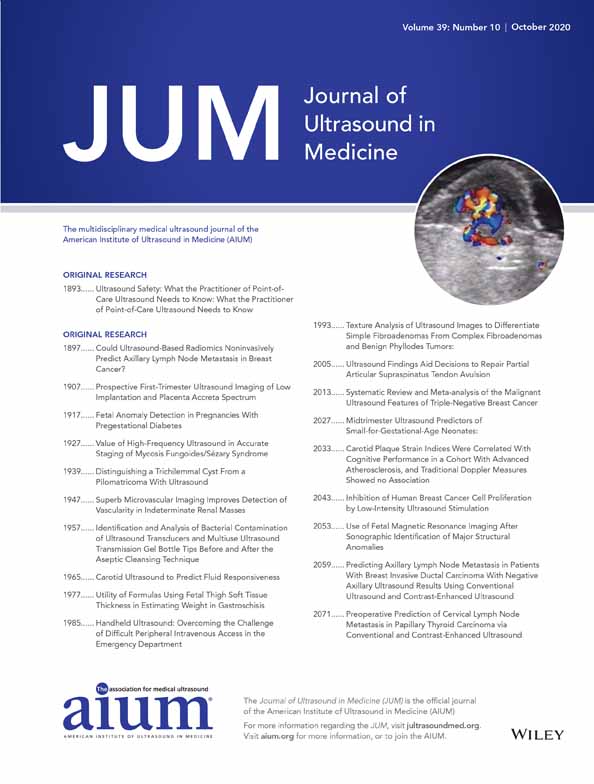Superb Microvascular Imaging Improves Detection of Vascularity in Indeterminate Renal Masses
Abstract
Objectives
Vascular assessment of indeterminate renal masses (iRMs) remains a crucial element of diagnostic imaging, as the presence of blood flow within renal lesions suggests malignancy. We compared the utility of Superb Microvascular Imaging (SMI; Canon Medical Systems, Tustin, CA), a novel Doppler technique, to standard color Doppler imaging (CDI) and power Doppler imaging (PDI) for the detection of vascularity within iRMs.
Methods
Patients undergoing contrast-enhanced ultrasound (CEUS) evaluations for iRMs first underwent a renal ultrasound examination with the following modes: CDI, PDI, color Superb Microvascular Imaging (cSMI), and monochrome Superb Microvascular Imaging (mSMI), using an Aplio i800 scanner with an i8CX1 transducer (Canon Medical Systems). After image randomization, each mode was assessed for iRM vascularity by 4 blinded readers on a diagnostic confidence scale of 1 to 5 (5 = most confident). The results were compared to CEUS as the reference standard.
Results
Forty-one patients with 50 lesions met inclusion criteria. Relative to the other 3 modalities, mSMI had the highest sensitivity (63.3%), whereas cSMI had the highest specificity (62.1%). Both cSMI and mSMI also had the highest diagnostic accuracy (0.678 and 0.680, respectively; both P < 0.001) compared to CDI (0.568) and PDI (0.555). Although the reader-reported confidence interval of mSMI (mean ± SD, 3.6 ± 1.1) was significantly lower than CDI (4.1 ± 1.0) and PDI (4.0 ± 1.0; P < 0.001), the confidence level of cSMI (4.1 ± 0.9) was not (P > 0.173).
Conclusions
Preliminary data suggest that SMI is a potentially useful modality in detecting microvasculature in iRMs compared to standard Doppler techniques. Future studies should aim to compare the efficacy of both SMI and CEUS and to assess the ability of SMI to characterize malignancy in iRMs.




